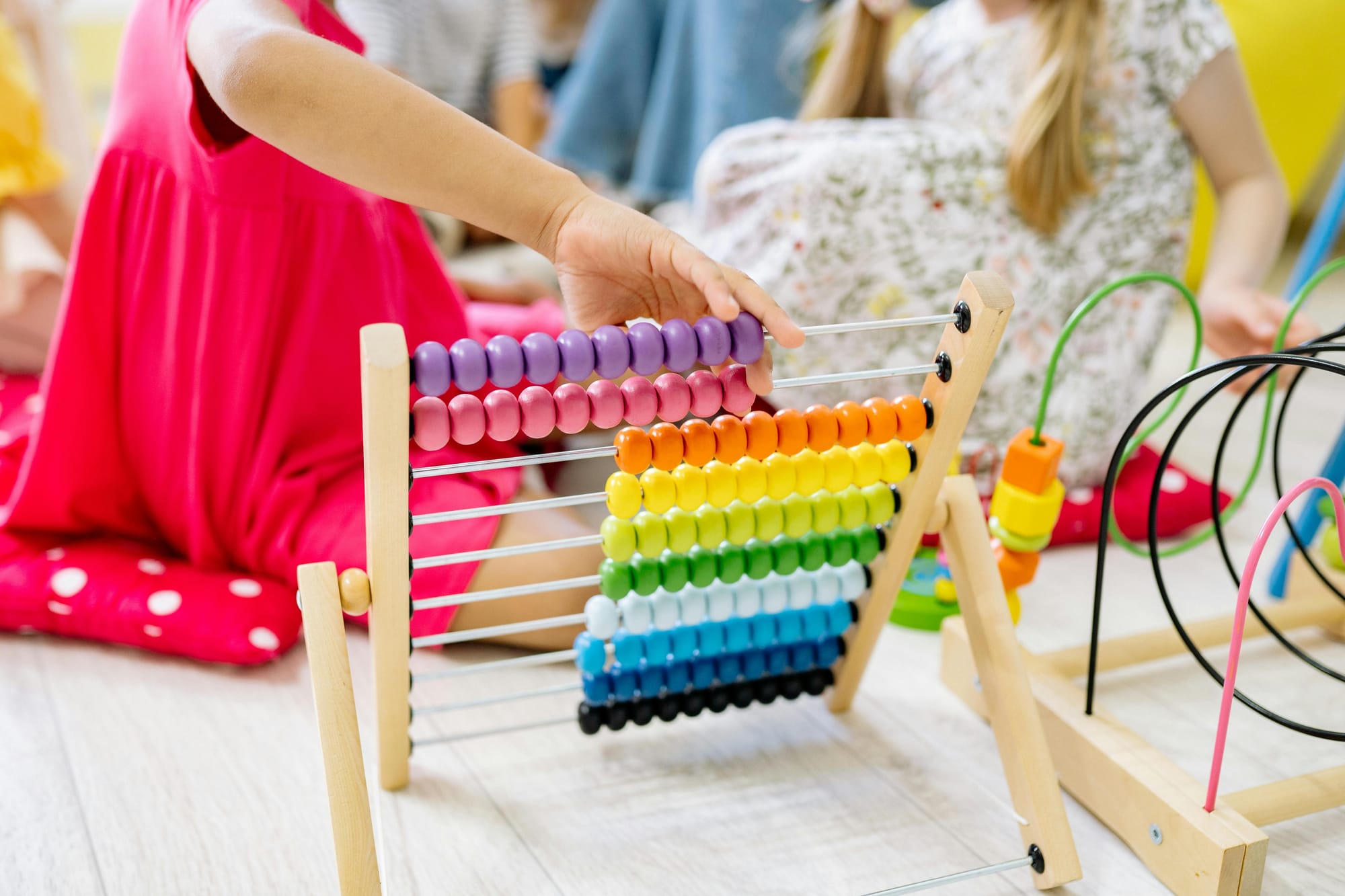How To Teach Addition in Kindergarten in 6 Easy Steps
Make kindergarten math fun with six simple strategies to teach addition. Perfect for parents and teachers to help kids build math skills joyfully!
Teaching addition to our young children is an exciting journey that lays the foundation for more complex math comprehension. While it's a crucial skill that will form the basis of what they’ll learn later in life, teaching addition is not without its challenges.
It’s essential to approach it in a way that is both engaging and accessible. Of course, it also needs to be developmentally appropriate, too. By breaking down teaching addition into manageable steps, learning math can be enjoyable for kindergarteners.
Here, we’ll look at six simple steps you can follow. We’ll also break down some challenges you may face. Let’s get started!
Importance of Early Math Education
Learning addition concepts in kindergarten will lay the cornerstone for their academic journey. It can give them the fundamental skills to not only understand math, but also learn that it’s not a subject to be feared.
With an early introduction of addition lessons for kindergarten, educators can nurture a child’s natural curiosity. Children have an innate ability to problem solve and word addition problems give them a chance to do just that.
Great teaching of addition for kindergarten can also help with critical thinking and logical reasoning. Early exposure to math will help build confidence and put them on the right trajectory to a bright academic future.

What is Addition for Kindergarten?
Addition is a fundamental aspect of math that involves combining two or more quantities to find a total. In kindergarten, this concept is often introduced through real-life scenarios they can relate to.
Beyond that, teaching can also involve techniques such as number line addition and even addition songs for kindergarten. Going beyond addition worksheets for kindergarten can engage their brains and speed up the learning process.
Beyond a basic understanding of addition, it’s important for children to become familiar with basic terminology. This includes knowing that a sum represents the total of the addition, and also what the plus and equals signs mean.
A few misconceptions about Teaching Math in Kindergarten
Before getting started with teaching math in kindergarten, it’s good to know of some common misconceptions. One of these is the belief that there will be significant anxiety about learning math. In reality, any learning anxiety can be avoided through early intervention and supportive teaching.
Another misconception is that all children can learn addition in the same way. We all have a diverse range of learning styles and preferences. This is why it’s important to come up with creative approaches to teaching kindergarten addition that meet all children’s needs.
Finally, there is also a line of thinking that simply repeating sums is the best way to reinforce addition memorization. While it certainly has its place, teachers need to promote a wide range of kindergarten addition techniques. This will help to give kindergarten children a deeper understanding of what they are being taught.
6 Easy Steps to Teach Addition in Kindergarten
Now we've looked at why teaching addition is so important and why different techniques need to be used, let's look at the steps!
1. Introducing Addition
The first step in creating a kindergarten addition lesson plan is to introduce it in a way that is simple and relatable. Here, you can explain that addition simply means putting two groups together to find out how many there are altogether.
You can do this visually by putting two groups of objects together and asking them to count how many there are. It’s important to use language that is easy for them to understand, saying things like “putting together” and “adding more”.
2. Counting Objects
After you’ve visually demonstrated the concept of addition, you can empower the children to do it by counting objects. This is one of the most effective kindergarten addition strategies, and the fancy term for using objects is called using manipulatives.
These manipulatives can be anything, but common items used are buttons and colorful beads. You can encourage students to count each group separately before combining the objects and asking the children to count them again.
Without physical manipulatives, teachers can also use kindergarten addition worksheets that have pictures of objects for easier learning. Manipulatives are a hands-on approach that gives young minds a great understanding of addition by seeing the process in action.
3. Visual Aids
Kindergarten addition curriculum resources go well beyond just manipulatives when it comes to visual aids. Number lines, ten frames, and number bonds have all been shown as great ways to help students visualize addition problems.
As we mentioned before, different children learn in different ways, so using different methods gives you the best chance to engage with the whole class. When it comes to kindergarten addition curriculum planning, variety is key.
An example of using a ten frame would be asking the kids to draw two groups of flowers, and then count the total. You can then get them to turn this into an addition sentence (such as 3 + 2 = 5) to showcase how their counting turns into a real math problem.
4. Songs and Rhymes
When it comes to fun addition activities for kindergarten, nothing beats a good sing-along! Music and rhyme are an effective teaching tool for just about anything. Addition is no exception, as songs will capture their attention and increase memory retention.
Repetition in kindergarten addition learning can sometimes be boring, especially with unengaging addition workbooks. Using songs and rhymes gives you that repetition but in a much more fun and engaging way.
This can be great for confidence-building too, as you can encourage students to sing along and actively participate. Using songs will allow you to reinforce the concepts you’ve been teaching while also improving memory retention.
5. Math Games
Another effective strategy for teaching kindergarteners is to play math games with them. There are some great addition worksheets in kindergarten that can be used for this, such as count and compare, roll and add, and addition mazes.
On the face of it, these games help to keep children engaged in learning but their benefits go well beyond that. They help to reinforce the addition concepts while also developing critical thinking and problem-solving.
You can make these games even more engaging by using colorful game boards, different dice, and unique counters to create a stimulating learning environment. Keep an eye on any kids who may be struggling to ensure everyone can participate and succeed.
6. Real-Life Applications
The final way to reinforce addition is to apply it to real-life situations. This is similar to using manipulatives but doing it in a way they can relate to. This helps to demonstrate to them how relevant and practical addition is to everyday life.
What real-life situations can you simulate? Snacks and toys, of course! Using cookies, for example, can be a way to engage their brain. Asking them how many cookies they'd have if they had two cookies and a friend gave them three more, for example.
You can then ask them to come up with their own examples of how addition can help them solve everyday problems. To aid in this, you can ask them to write addition sentences, if they are able to do so. Having this real-life application will help to reinforce everything they’ve learned and make them eager to learn more.
Final Thoughts
Teaching addition to kindergarteners is a rewarding experience and one that can lay the foundation for more complex concepts. These six steps will allow teachers to guide them gradually through addition in a way that is effective, yet still fun and engaging.
These steps will give them a rich learning environment while also catering to different levels of development and learning styles. Before you know it, you’ll have a class full of math whizzes who can’t wait to take the next step on their learning adventure.

